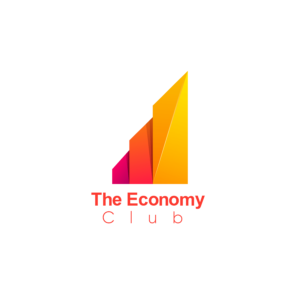RIYADH: The number of Americans filing new claims for unemployment benefits fell last week, consistent with a labor market that remains tight amid strong demand for workers despite rising interest rates and tightening financial conditions.
Initial claims for state unemployment benefits decreased 8,000 to a seasonally adjusted 210,000 for the week ended May 21, the Labor Department said on Thursday. The decline partially unwound some of the prior week’s surge, which had pushed claims to their highest level since January.
Economists polled by Reuters had forecast 215,000 applications for the latest week. Some blamed the recent increase in applications to less generous seasonal factors in May, the model that the government uses to strip out seasonal fluctuations from the data, relative to the prior two months.
Others, however, believed some retailers were laying off workers. Several retailers, including Walmart Inc., last week cut their full-year earnings forecasts, warning that inflation was squeezing profits.
In a separate report on Thursday, the Commerce Department confirmed the economy contracted in the first quarter under the weight of a record trade deficit and a slightly slower pace of inventory accumulation compared to the fourth quarter.
Gross domestic product fell at a 1.5 annualized rate last quarter, the government said in its second GDP estimate. That was revised down from the 1.4 percent pace of decline reported in April. The economy grew at a robust 6.9 percent pace in the fourth quarter.
Italy business morale rise
Morale among Italian businesses and consumers rose in May, data showed on Thursday, with service industries regaining confidence despite the ongoing war in Ukraine while manufacturers remained downbeat.
National statistics institute ISTAT’s manufacturing confidence index fell to 109.3 in May from 109.9 in April, but still came in slightly above a median forecast of 109.0 in a Reuters survey of 10 analysts.
ISTAT’s composite business morale index, combining surveys of the manufacturing, retail, construction and services sectors, rose to 110.9, compared with April’s reading of 108.4.
More positive sentiment in the services and retail sectors outweighed a decline in manufacturing and construction.
ISTAT said it had revised it methodology for calculating overall business sentiment, leading to a marked revision of its previous readings for April and preceding months.
Consumer confidence rose in May to 102.7 from 100 in April, the first increase after four consecutive declines. The reading comfortably beat a median forecast of 100.5 in Reuters’ poll.
Australia business investment dips
Australian business investment fell unexpectedly in the first quarter as floods and bottlenecks hit building work, though firms sharply lifted plans for spending in the year ahead in a boost to the economic outlook.
Data from the Australian Bureau of Statistics out on Thursday showed private capital spending dipped a real 0.9 percent in the March quarter, from the previous quarter, missing forecasts of a 1.5 percent increase.
Spending on buildings fell 1.7 percent, offsetting a 1.2 percent rise in investment in plant and machinery which is important as this will directly contribute to economic growth in the quarter.
Promisingly, firms upgraded spending plans for the year to June 2023 to a strong A$130.5 billion ($92.49 billion), up almost 12 percent on the previous estimate and above the A$122 billion analysts had looked for.
The report echoes data showing construction work done fell 0.9 percent in the first quarter as bad weather and supply shortages dragged on activity, particularly in housing where building costs rose at the fastest pace in 21 years.
Bank of Canada to hike overnight rate
The Bank of Canada will hike its overnight rate by 50 basis points on June 1, according to all 30 economists polled by Reuters, who see interest rates at least a half-point higher by year-end than predicted just one month ago.
The BoC seems set to follow an aggressive path similar to that taken by the Federal Reserve to tame soaring inflation, which hit over a three-decade high of 6.8 percent in April and has now been above the central bank’s 1-3 percent range for more than a year.
After a 50 basis-point hike in April, its biggest single increase in 22 years, BoC Gov. Tiff Macklem said interest rates may need to go above the neutral range — currently estimated to be between 2 percent and 3 percent — for a period of time to get inflation back to target.
South Korea steps up inflation fight
South Korea’s central bank on Thursday delivered back-to-back interest rate hikes and forecast further aggressive increases to wrestle consumer inflation down from 13-year highs.
The Bank of Korea raised its benchmark policy rate by a quarter of a percentage point to 1.75 percent, the highest since mid-2019, joining a global wave of tightenings as central bankers grapple with price spikes not seen in decades.
Russian central bank slashes key rate
Russia’s central bank slashed its key interest rate to 11 percent on Thursday and said it saw room for more cuts this year, as inflation slows from more than 20-year highs and the economy heads toward a contraction.
It announced the move, which followed two previous 300 basis point cuts which took the rate to 14 percent, at an extraordinary meeting. The bank has been gradually reversing an emergency rate hike to 20 percent in late February that was triggered by Russia’s Feb. 24 move to send tens of thousands of troops into Ukraine and the imposition of Western sanctions in response.
(With input from Reuters)

